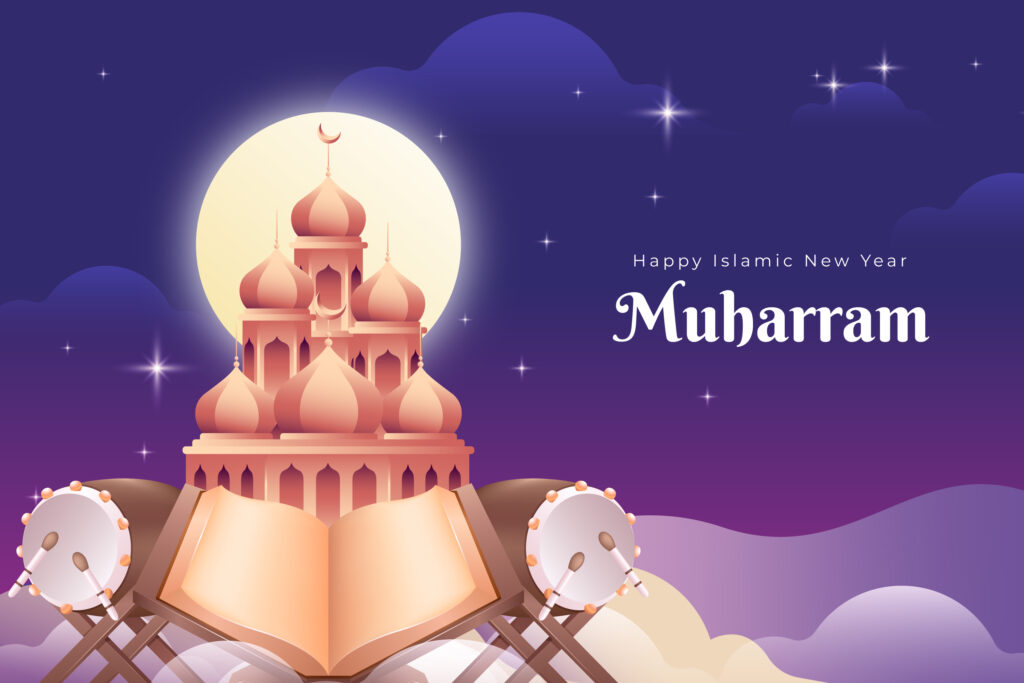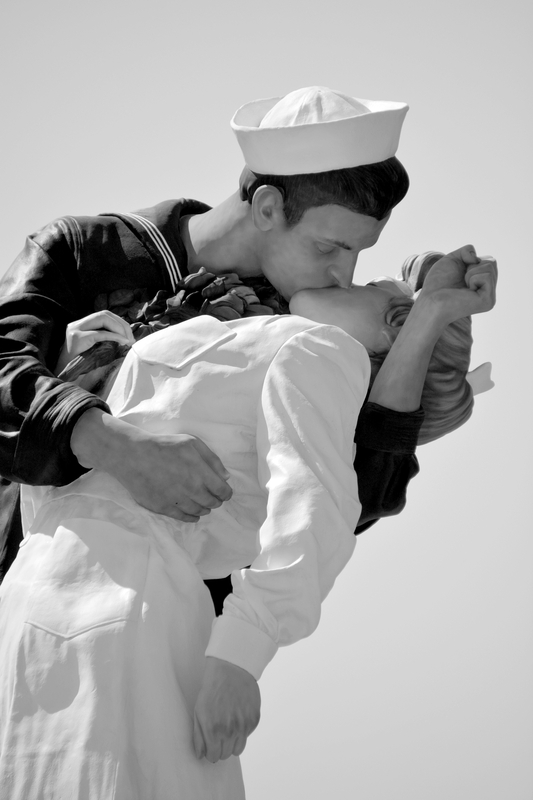Muharram is the first month of the Islamic calendar, which Muslims observe to be one of the most holy months of the year, second behind Ramadan. It is a holiday of remembrance and mourning. While it is considered the Islamic New Year, the holiday is more closely associated with the Day of Ashura, the tenth day of the month of Muharram. This is a day of mourning for Islamic martyr and grandson of the prophet Muhammad, Hussein ibn Ali.
The main rituals of this holiday are mourning and fasting. Fasting practices will differ amongst groups. For some, fasting means refraining from eat or drink only at certain times, such as the daylight. The length of fasting also varies—certain groups may only fast on the Day of Ashura while others will fast the whole month or the first ten days. The name of this sacred month comes from the Arabic term “Haraam,” or sinful.
Background
The Islamic New Year differs greatly from western tradition. The month of Muharram is observed as a fast and a period of meditation, mourning, remembrance, and peace. For this reason, Muslims are not supposed fight during the period. Muharram commemorates many events that happened during this month. On the tenth day, Musa, the figure called Moses within Christian and Jewish traditions, is believed to have freed his people from the Egyptian Pharaoh. Muslims usually celebrate this during the 9th-11th to distinguish their celebration from the Jewish celebration of this event.
Ashura brings the meditative and mourning elements to the holiday, especially modern Shia meditation for certain groups. The Shia calls this day the Mourning of Muharram. On the tenth day of the month, the Day of Ashura commemorates Hussein ibn Ali. The grandson of Muhammad, Hussein led his 72 followers in the Battle of Karbala in 680. Hussein’s forces faced the larger army of Yazid I, whose caliph status Hussein had refused to acknowledge. All of the adult male followers died while the women and children became prisoners of Yazid in Damascus. Included in the casualties was Hussein’s six month old son. Muslims consider all of those who sacrificed their lives martyrs, including them in the recognition of Hussein.
Commemoration of this event was first observed by Hussein’s family, when his granddaughter started to mourn his death and spoke out against his opposition. In response to the wide mourning, Yazid release his prisoners of war and provided them with a house in which to mourn.
Hussein ibn Ali is one of Islam’s most respected figures by many different Muslim groups. He is known for refusing to acknowledge the Umayyad caliph, Yazid I, who Hussein believed was an unjust ruler. Yazid I’s people sent Hussein letters pledging support, which they later rescinded. As a result, Hussein’s caravan was confronted on the way to Kufa and he was beheaded. The outcry upon his death lead to the overthrow of Yazid I.
Traditions
There are several ways that different Muslim groups commemorate Muharram:
Mourning is a central aspect of the tradition, but is less important to Sunnis, who put more weight on remembrance. Some will not mourn at all. However, groups such as the Nizari Ismaili perform signs of respect for other groups’ mourning by restricting the celebration of other religious events, birthdays, and marriages. Many mosques provide observers with a meal at night after the fast ends. The meal is seen as an act of communion.
The branch known as the Twelver, which includes the groups of Ussoli, Akhbari, and Shaykhi, gathers for recitations, lamenting, and mourning. These will be very sorrow in theme. There will be drumming and chanting, called “Ya Husayn.” There may be a reenactment of the Battle of Karbala in the form of a passion play.
Mourning of the Bektashis and Alevis includes a 10-12 day fast at the beginning of the month. They will wear black clothing and refrain from shaving their hair. Recreational and pleasurable activities are also restricted. Older celebrations also restricted bathing and clothing changes. The Alevis do not consider a celebration of Muharram outside of this period.
The tradition of mourning is called matam. The Shia perform acts of lamentation to fulfill this tradition, meaning they will gather to beat their chests in honor of Hussein. This may be done with one’s hands or with tools, oftentimes knives, swards, chains, and blade-like instruments. Some communities have banned this practice.
In India, observers hold processions and ceremonies called Azadari. A procession called Chup Tazia has been a part of this celebration since the 16th century. This procession has caused a controversy within India when a province, Uttar Pradesh, outlawed Azadari after a series of riots occurred in 1977. This resulted in wide protest and many Muslims were arrested for celebrating anyway. There was a hunger strike in 1997 to protest the law. Three young people set themselves on fire, a practice associated with martyrdom called self-immolation, that same year. This resulted in their deaths. A peace rally was held in 1997 on April 18, 1997 with marchers of over 200,000 Shia observers. After several more imprisoned Muslims and protests, the ban was slightly lifted, allowing for a tuned-down procession.
Another tradition is to make a pilgrimage to Hussein’s shrine in Karbala. Around one million Muslims will make this journey every year on the Day of Ashura. Karbala is considered a holy city within Islam along with Medina and Mecca.













































